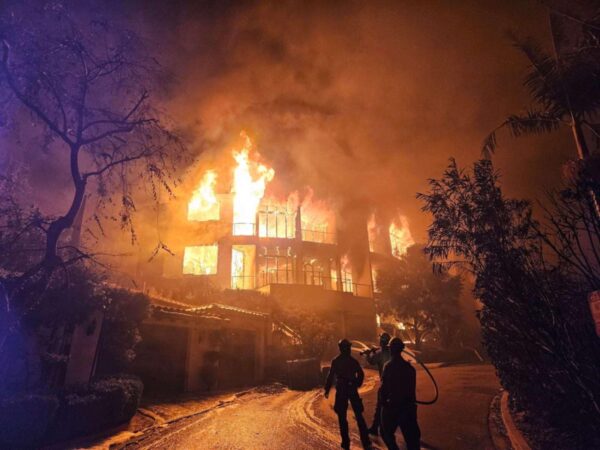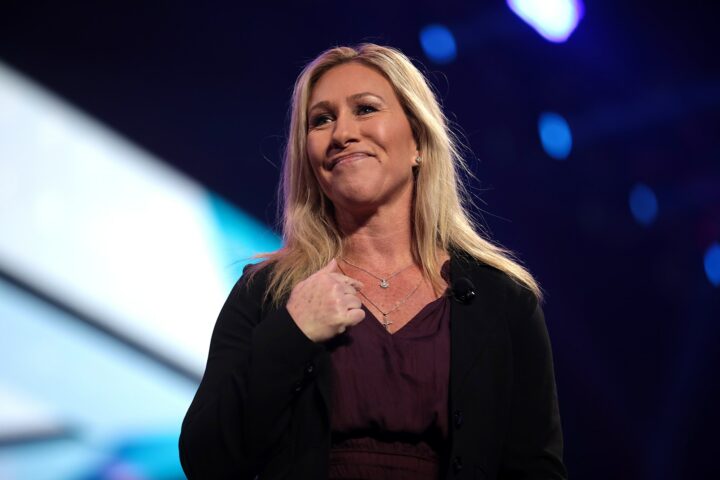The Los Angeles Times is now reportedly under fire after publishing a story falsely suggesting that a Pacific Palisades home was “rebuilt” in record time following January’s devastating wildfire — despite public records proving the project began months before the fire even started.
The Times ran the article Saturday under the headline, “The first home has been rebuilt in the wake of the Palisades Fire.” The piece celebrated a two-story showcase property by Thomas James Homes (TJH), claiming it marked a milestone in the community’s recovery.
But it didn’t take long for readers — including high-profile tech entrepreneurs and local residents — to uncover the truth.
Records from the Los Angeles Department of Building and Safety show the permit application was submitted November 8, 2024, two months before the January blaze. Plan checks, corrections, and approvals occurred throughout late 2024, with additional filings in early 2025. In other words: this home wasn’t “rebuilt” after the fire at all — it was a developer spec project already in progress.
Online critics blasted the Times for misleading the public.
“It’s not even true. It’s just all an absolute disgrace,” wrote former House Communications Director Phil Hardy.
“This is pure propaganda,” posted Oculus founder Palmer Luckey. “It isn’t a rebuilt home — it is a totally different 3x larger development permitted a month before the fire. The fire saved demolition time.”
Pacific Palisades resident and commentator Spencer Pratt added, “Plans were submitted Nov 8 2024. Not a fire rebuild, just a developer spec from 2024.”
Urban planning writer Andy Boenau accused the LA Times of “writing to manipulate rather than inform,” noting that a genuinely curious journalist would question why — nearly a year later — almost no actual fire victims have been able to rebuild. His conclusion: Los Angeles’ byzantine permitting system makes reconstruction nearly impossible.
Mayor Bass Celebrates the “Rebuild” Despite Evidence It Wasn’t One
Los Angeles Mayor Karen Bass promoted the TJH house as a symbol of hope, praising its Certificate of Occupancy as proof the city was “expediting” the rebuilding process.
“The Palisades community has been through an unimaginable year,” Bass said. “But today is an important moment of hope.”
But for families who lost homes — many of whom confronted Bass and city officials over slow-moving approvals, expensive fees, and bureaucratic stonewalling — the mayor’s celebratory tone rang hollow.
In January, when President Donald Trump visited the fire zone, residents told him they were being forced to wait for city permission to clear debris from their own property. A visibly irritated Trump pressed Bass to “let these people handle their own land” instead of burying them in red tape.
Fire Was Initially Blamed on Climate Change — Then an Arson Arrest Was Made
Democrats, including city officials, initially attempted to blame the Palisades Fire on climate change. But federal investigators later arrested 29-year-old Jonathan Rinderknecht, revealing the blaze was a continuation of a smaller arson fire days earlier.
The fire destroyed 6,837 structures, damaged 973 more, killed 12 people, and burned 23,000 acres.
Rebuilding Remains Slow — and Expensive
Bass claims over 1,200 rebuilding plans have been approved and more than 1,000 permits issued. Yet residents report staggering fees — sometimes reaching $70,000 — and warn that progress remains painfully slow.
Meanwhile, critics say the misleading “rebuild” narrative underscores a much deeper problem: politicians and media outlets eager to declare victory, while real families still wait for permission to rebuild their lives.
[READ MORE: DOGE ‘Efficiency’ Agency Collapses After Massive Overstatements and Broken Promises]








